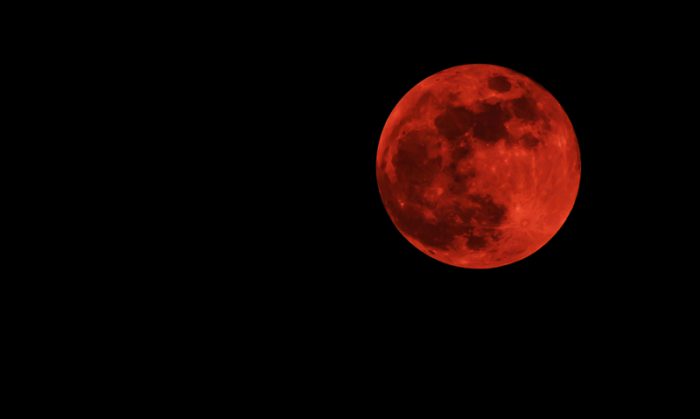Sometimes there's an event that's packed with so much awesomeness that you can barely believe it. Like when a roller coaster serves ice cream while showing 3D movies and giving away free puppies. (Actually come to think of it, that sounds like a mess. But you get the idea.)
Well, early this Wednesday (tomorrow!) morning, get ready for the ice-cream-roller-coaster-movie-theatre-puppy-train of astronomical events.
Folks, it's gonna be a super blue blood moon!
Triple pack of WOW
A composite image showing last November's super moon as it rises over Los Angeles. (Getty Embed)
Perhaps you think we're just stringing a bunch of words together here, but this is truly a thing. And it's honestly amazing. So let's break the pieces down here...
- Super moon: When a full moon happens at the exact same time as its perigee (perigee is the point in the moon's orbit when it's closest to Earth). This makes the Moon appear super-sized.
- Blue moon: When there are two full moons in a single month, the second one is called a blue moon. Blue moons are fairly rare — though there will be another one in 2018 on March 31. The next ones won't come until 2020 and 2023.
- Blood moon: Another name for a lunar eclipse, or when the Earth passes between the Moon and the Sun. The Earth's shadow blocks out blue light rays, casting a reddish glow over the dimmed Moon.
So to put it all together; the super blue blood moon is a rare second full moon in a month that it is also very large in the sky and a hazy reddish-orange colour. It should be just beautiful!
I'm in! When can I watch?
Super moons can draw quite a crowd. Will you be one of the people watching tomorrow morning? (Getty Embed)
We thought you'd be interested. After all, this type of moon hasn't happened in a century! And that enthusiasm is good because seeing this event in North America will require a bit of effort and early-rising. There's a trade off here depending on where you live...
- The further east you live, the later you can wake up to see it. Though, because the Sun will also be near rising, the Moon won't be as visible.
- The further west you live, the earlier you'll need to wake up. But you'll have much better views as the sky will still be fully dark. (In other words, you're lucky!)
Here are the viewing times based on time zones — if you're lucky enough to live further west, choose the peak time for best viewing. In all cases, look to the western horizon. Happy viewing of 2018's super blue blood moon!
- UTC (Atlantic): 6:51am will only see a partial eclipse just before moonset
- EST (Eastern): 5:51am eclipse begins, should see some total eclipse before sunrise
- CST (Central): 4:51am eclipse begins, 6:51am peak total eclipse
- MST (Mountain): 3:51am eclipse begins, 5:51am peak total eclipse
- CST (Central): 2:51am eclipse begins, 4:51am peak total eclipse
 Don't be scared, but this Wednesday there will be blood in the sky...a blood moon! (Woravit Vijitpanya | Dreamstime.com)
Don't be scared, but this Wednesday there will be blood in the sky...a blood moon! (Woravit Vijitpanya | Dreamstime.com)










it makes my student more good at thins thank you for showing me this 😀
OH MY GOD I REALLY WANT TO SEE THE BLUE MOON ON
THE MARCH 31 IT IS SO COOL AND I AM SO EXICTED THINK
YOU FOR THE NEWS OWL!!! 😀